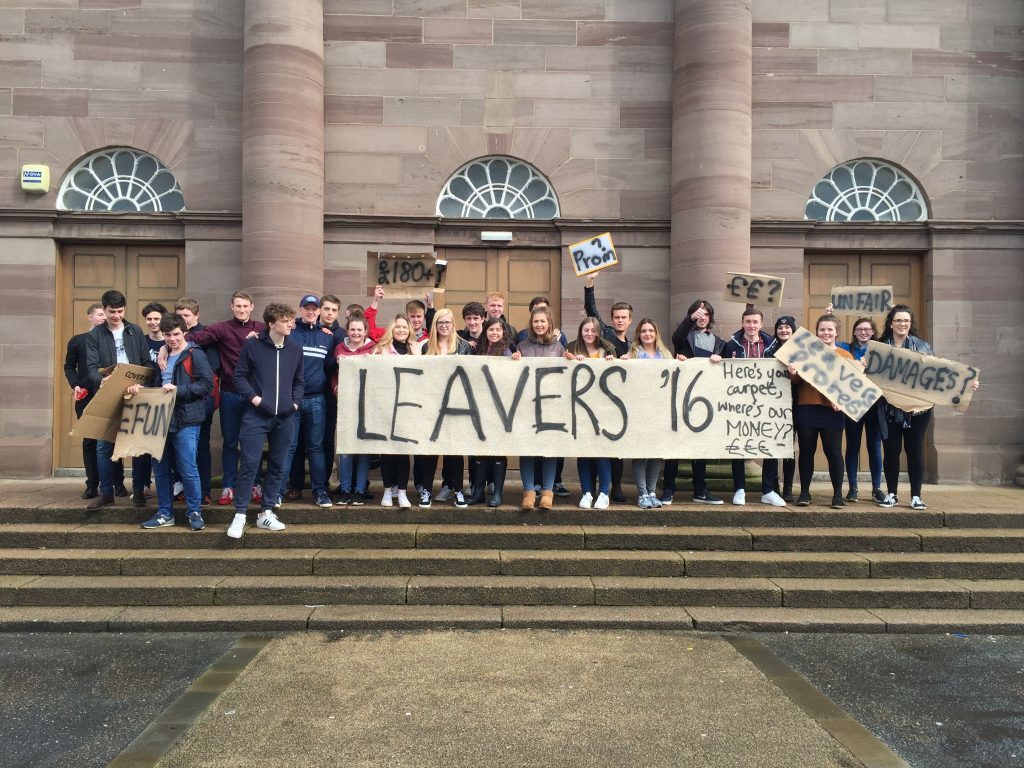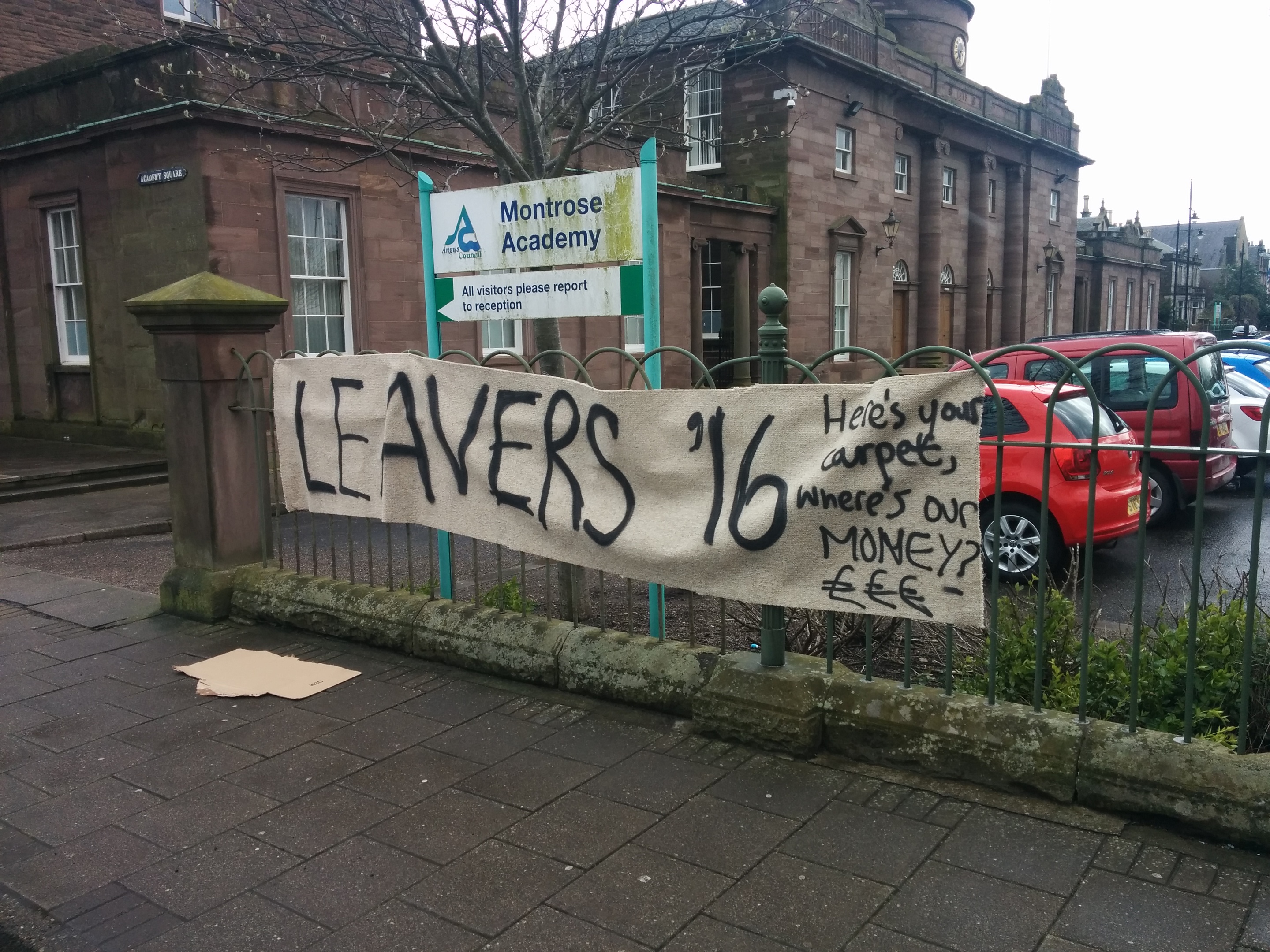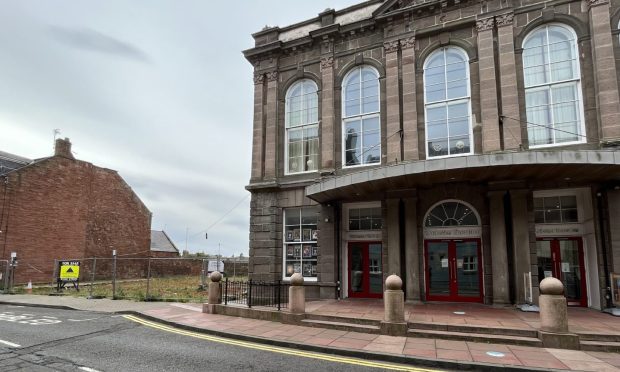The Angus ‘Carpetgate’ controversy will see changes to the way schools handle pupils’ money.
An independent investigation was carried out by Angus Council following the prom protest by Montrose Academy pupils.
Sixth years led a protest in May over claims that £180 raised from prom ticket sales was being kept by the school due to a carpet being damaged in the sixth year common room.
This led to pupils turning up at the school with a length of carpet which had the words: “Here’s your carpet, where’s our money?” written on it.

The group of around 30 pupils also held up home-made placards such as “Damages?”, “Refund”, “Unfair”, “Prom” and “£180+”.
The carpet was then tied up on the railings beside the school sign before the pupils moved the protest further up the road.
Following the controversy, the audit found that some aspects of financial governance were “weak” and there was “some inconsistency” in how school funds were organised and managed.
It has emerged that a number of recommendations have now been made to “strengthen the control environment” which will be implemented across all schools.
These include updating school funds guidance to explain the types of fund transactions “that may be considered appropriate” and “appropriate records” being kept of decisions and approvals.
Senior management then propose to centralise the funds – which are raised for extra-curricular activities – from 2017/18 which would be administered by the council.
However, the council said the centralisation of funds – into one single bank account – was at the stage of “early discussions” and it was “no more than an idea at the moment”.
Under the move, each school would still have their own fund but it would all be kept in a central pot and managed by the council.
Allan Munn, audit manager of Angus Council, said: “All Angus schools operate individual school funds for the purpose of controlling monies raised in relation to local school-related activities.
“The normal sources of income are donations, fundraising activities, contributions from pupils towards school trips, voluntary activities etc.
“School staff, under the leadership of the head teacher, act as custodians of the funds.
“The audit sought to provide assurance that appropriate controls are in place to ensure effective management of school funds within the Angus secondary school estate.
“The audit found that some aspects of financial governance were weak and there was some inconsistency in how school funds were organised and managed.
“While it is accepted that there will necessarily be some flexibility to accommodate local arrangements, given the significant sums of money being processed through the funds, there must be a sound system of internal control that underpins the overall management of the funds.
“The recommendations should be implemented across all schools where necessary.”
He said senior management propose to centralise the funds in 2017/18 “which may in due course have an impact on the controls”.
A number of areas were identified where improvements could be made to strengthen the control environment and ensure compliance with good financial management.










